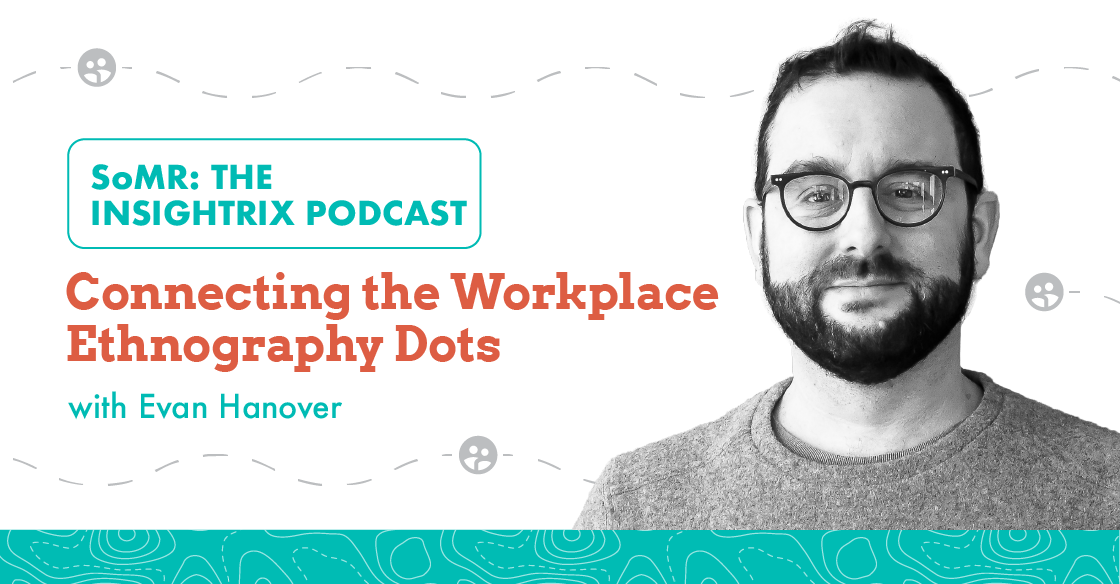
Connecting the Workplace Ethnography Dots with Evan Hanover

The world is changing and there’s nowhere we’re feeling it more than in the workplace. We’re seeing more hybrid setups and even a break away from the traditional nine-to-five. Companies are making adjustments for better work environments and are banking on this to motivate employees to be more productive and effective. If you’re ready to be challenged and start connecting some dots on what seems like a blank canvas of sorts, we can help.
What the Heck Does Ethnographic Research Have to do with Workplace Culture?
Culture is a social construct that tells us what to do and what not to do. There are a multitude of ways we can see and experience culture in our lives and workplaces. In the workplace, organizational culture can be created through office rituals — like going to get drinks after work or simply having a meeting every Thursday. So much of our culture is transmitted and reinforced through repetitive behaviors. But just because it is repeated and then codified into a culture doesn’t mean it was either intended or good. The first step in workplace ethnography is understanding how crucial it is to pay attention to the things that are organically shaping the workplace experience.
By default in our daily lives, we are creating culture. Where ethnography comes in is when we want to understand what is happening in the workplace. We need to know what is happening before we take steps to change or even amplify it — so what does this mean from a design thinking ethnographic research perspective? Change management goes hand in hand with operating a business. Companies are constantly moving forward, making decisions and requiring constant communication. When driving a vision forward or simply trying to operate things smoothly amid change, Evan suggests that “sometimes you have to code certain interactions in the language and symbols to better adapt to the [existing] culture.” This, most likely, will yield the best result, but it can’t be done if the culture is not first understood.
Creating Culture
What comprises culture is hard to articulate. You can ask people, but them telling you about it and you experiencing it are two different things. When a company wants to adapt its culture, workplace ethnography is essential in understanding how the culture is really being lived — the unarticulated practices, unwritten rules of engagement, and valued interactions that are fundamental to how a group is operating.
Researchers look at the culture as it is holistically, to codify it in a meaningful way and articulate it so others can better understand its underpinnings. Co-creation is then used to bring down barriers and provide a framework within which workers can feel a shared sense of belonging and engagement within a company. An integral part of co-creation is listening and being empathetic to the wants and needs of all employees and begin balancing those with the realities of how the business can operate efficiently.
The Holistic Approach to Employee Engagement
Workplace ethnography is a great way to understand and then improve your organization’s culture in a manageable way. A great place to start is by looking at bright ideas other businesses are using to cultivate culture. Creating or changing a culture with intention can allow for a more authentic approach that encourages deeper employee engagement.
Within this more holistic approach to managing an organization, it becomes clear that there is a benefit to creating better workplaces and work experiences. Workplaces that foster engagement have been shown to perform better, but a great culture requires nurturing and ongoing communication.
How do we engage and inspire? By asking questions about the current state of our organizations:
- Are we bringing the best culture possible?
- What are we doing well or not so well?
- How can we adapt?
Evan shares a personal example of how Conifer maintained culture through a small, beloved tradition and passed it on to new remote hires during the pandemic. It involved chocolate, but you’ll have to listen to learn more.
Listen to all three parts of this game-changing and challenging subject on the Insightrix podcast.
